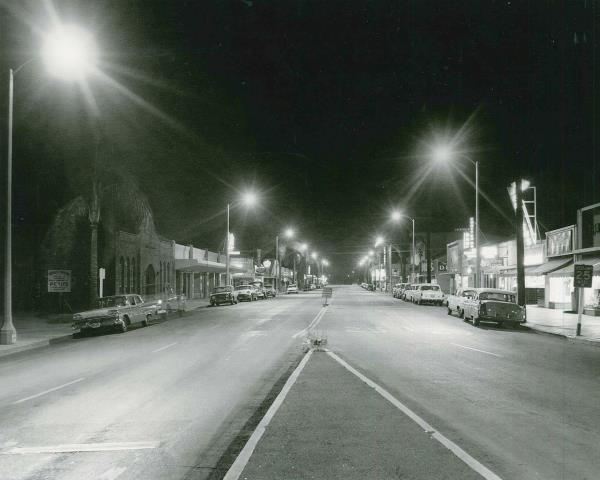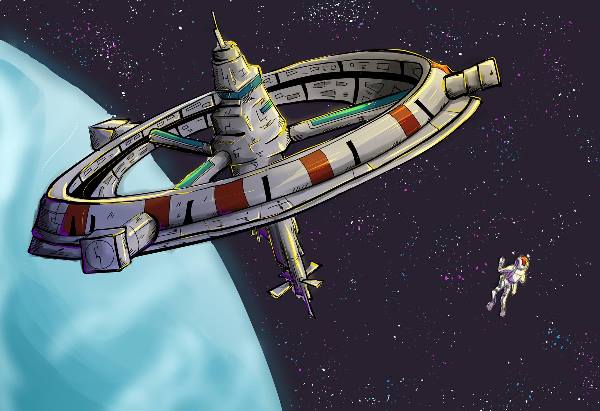Perhaps the primary perquisite of being a writer (certainly not the compensation, though Dr. Asimov is the happy exception) is the ability to take one's work anywhere. Thanks to 'faxes and patient editors, all of this column's readers can follow me around the world. To wit, I am typing this article in the lounge of my hotel deep in the heart of Tokyo, the capital of the nation of Japan.
Japan is virtually a second home for me and my family, and we make it a point to travel here as often as time and funds permit. Now that the Boeing 707 has shrunk the world by almost 50%, I expect our travels to this amazing, burgeoning land will increase in frequency.
Tokyo, of course, is one of the world's biggest cities, and the crowds at Shinjuku station attest to this. And yet, there are still plenty of moments of almost eerie solitude–not just in the parks and temples, but in random alleyways. There are always treasures to find provided one is willing to look up and down (literally–only a fraction of Tokyo's shops is located on the ground floor!)


Gentle readers, I have not forgotten the main reason you read my column. In fact, the timing of my trip was perfect, allowing me to take all of the September 1960 digests with me to the Orient. But first, I need to wrap up last month's batch of magazines. To that end, without further ado, here is the August 1960 Fantasy and Science Fiction!

Robert F. Young has the lead short story, Nikita Eisenhower Jones. I'd liked his To Fell a Tree very much, so I was looking forward to this one, the story of a young Polynesian who finagles his way onto the first manned mission to Pluto only to find it a lonely, one-way trip. Sadly, while the subject matter is excellent, the tale is written in a way that keeps the reader at arm's length and thus fails to engage in what could have been an intensely powerful, personal story.
The Final Ingredient is a different matter altogether. Jack Sharkey had thus far failed to impress, so I was surprised to find him in F&SF, a higher caliber magazine, in my opinion. But this tale, involving a young girl whose efforts at witchraft are frustrated until she abandons love entirely and embraces wickedness, is quite good indeed.
John Suter's The Seeds of Murder, a reprint from F&SF's sister magazine, Ellery Queen's Mystery, is about telling the future through regressive (or in this case progressive) hypnosis. It's cute, but something I'd expect to find in one of the lesser mags. I suppose this should come as no surprise–this is Suter's first and only science fiction/fantasy story, so far as I can tell.
Rosel George Brown is back with another dark tale: Just a Suggestion. When aliens subtly introduce the idea that the way to win friends and influence people is to be less impressive than one's peers, the result is economic downturn and, ultimately, planetary destruction. Obviously satirical; rather nicely done.
This brings us to Robert Arthur's novelette, Miracle on Main Street. A boy wishes on a unicorn horn that all of the folks in his small town, good and bad, should get what they deserve. There is no ironic twist, no horrifying consequences. It's a simple tale (suitable for children, really) that very straightforwardly details the results of the wish. It should be a vapid story; Arthur goes out of his way to ensure there are no surprises. Yet, I enjoyed it just the same. I suppose a little unalloyed charm is nice every so often.
The Revenant, by Raymond Banks, is a fascinating little story about human space travelers who explore a planet less fixed in sequence and probability than ours. Their lives are far less dependable, but infinitely more varied and interesting. The closest approximation would be if our dreams were our waking lives and vice versa (and perhaps this was the tale's inspiration). Good stuff.
Avram Davidson has a one-pager, Climacteric, about a man who goes hunting dragons in search of romance. He finds both. It is followed by G.C.Edmondson's Latin-themed The Sign of the Goose, a strangely written story about an alien visitation that, frankly, made little sense to me. It stars the same eccentrics as The Galactic Calabash.
Asimov has an article about the Moon as a vacation spot whose main attraction is the lovely view of Earth. Catskills in the Sky, it is called, and it's one of his weaker entries.
Finally, we have Stephen Barr's Calahan and the Wheelies, about an inventor who creates a species of wheeled little robots with the ability to learn. The concept is captivating, and the execution largely plausible. Sadly, the story sort of degenerates into standard sci-fi clichés: the robots, of course, become sentient and rather malicious. It's played for laughs, but I can just imagine a more serious story involving similar machines being put to all sorts of amazing uses. Imagine a semi-smart machine that rolled around your house vacuuming and mopping your floor. Or a programmable dog-walker. I like robots that don't look like people or act like living things, but which are indispensible allies to humanity. I want more stories featuring them.
All told, I think this issue clocks in about a shade over 3 stars. A thoroughly typical F&SF, which is no bad thing.
See you in a few days with more from the Land of the Rising Sun!














